Between Alma and Belén—On Identity and Journeys Home
I had not visited my father’s family in Mexico in twenty-one years. In my youth, it was an annual trip. My parents piled us six kids into our Country Squire Station Wagon and headed down the coast through Mexicali, Sonora, Sinaloa, and finally, Jalisco. In reality, my parents didn’t have childhood homes to return to. We had an elaborate, welcoming network of aunts, uncles and great-uncles.
Why did I let so much time pass?
In part, I was daunted by the ceaseless reports of violence. An uncle here in the States had lived to tell of taking the wrong commuter van at the airport and being robbed at gunpoint. The Mexican news sites regularly reported “desaparecido” notices of children from my mother’s village. Gangs who targeted the children for organ-smuggling rings were active in that zone. The October 2014 disappearance of the 43 Normalistas in Ayotzinapa, Guerrero also loomed in my mind.
My nostalgia for Mexico seemed at odds with the Mexico made villainous in the media. However, my biggest obstacle was something less geo-political. I had become estranged from my father’s family. It’s not like I hadn’t set foot in the country. I’d visited my mother’s family in Tecalitlán, in Oaxaca and Mexico City when I had traveled for work.
You see my mother, at the age of sixty-five, did something decidedly non-traditional, radically un-first-generation: she separated from my father. My father had struggled with alcoholism for decades and the addiction subjected our family to many painful, bitter years. Only a few of our relatives had ever witnessed how brutal and cruel my father had been, and most of them had attributed it to old-world parenting. When my mother filed for divorce, we were for the most part dropped. My mother’s entire network of in-laws, comadres and compadres back home dissolved in a matter of months.

However, in June of 2016, I heeded the absolute call to return with my own children to our home villages in Jalisco, to deepen their connection to the country, which they had never seen. I have always prioritized their Mexican-American identity. I enrolled them in Spanish immersion preschool. We celebrated as many holidays as we could: las Posadas, los Días de Los Muertos, el 16 de Septiembre, and el Día de la Virgen de Guadalupe. We took them to mariachi, Latin jazz and jarocho festivals. They made authentic delicacies with their abuelita: sopitos, albóndigas and buñuelos. By age six, they could name at least four Pre-Columbian tribes and knew the basics from the Spanish Conquest. Meztizaje became part of my nine-year old’s vocabulary.
Though my kids are now third-generation and in reality, only half Mexican. I see them as brown and beautiful, but they could easily identify as any number of ethnicities. As anti-immigrant sentiment grew in the media in the 2016 election season, I felt compelled to make sure they would say, “I’m Mexican,” whenever someone asked about their heritage. I wanted them to answer proud. However, I couldn’t accomplish this by relying solely on Latino picture books and folk songs. If my kids had not been to the country, how could they truly own the culture? This proud Mexican mamá began to feel like a fraud.
Even though my relationship with my father was fractured, I try to see him through the lens of his sacrifice. I know his immigration journey and uprooting broke his spirit. When my father left his mother Isela’s house, it was a crumbling structure in Tuxpan, damaged from a 1942 earthquake. He was fourteen, the oldest of seven children and the first to leave Mexico, in search of his own father, who was already working at a California brick factory. That meant Abuela Isela tended to seven children on her own, while her older brothers also provided for her children.

When my mother left at nineteen, she was actually just leaving her employer’s residence. She had worked as a live-in domestic for the owners of a pharmacy in Tecalitlán. She had survived an itinerant childhood.
On childhood trips with my father, we often bought lilies and gladiola in Ciudad Guzmán and took the short drive to Tuxpan to find Abuela Isela’s grave. The cemetery attendant always viewed us suspiciously, until my Dad made small talk about some old-timer. The attendant’s hard demeanor would crack and my father would tip him generously. My father and I have a picture kneeling near her tombstone. I treasure that photo like some girls treasure a photo of the father-daughter sock hop.
I feel tied to the places, the very cities, where my dead are buried. Edwidge Danticat in her book, Create Dangerously, points out a time-honored line from Gabriel García Márquez in One Hundred Years of Solitude, when José Arcadio Buendía tells his wife, “A person does not belong to a place until there is someone dead under the ground.”
Though home is also where your most visceral and sensual formative memories are engraved in your consciousness. So many firsts took place in my parents’ villages: first time to the ocean, first menstruation, first time realizing my chicken soup came from the same chickens I had played with a few days earlier, first time as a flower girl in a wedding, first time dancing a ranchera with a boy and first time bathing in a river.
What would be my children’s firsts if I hadn’t bothered to take them there? How could they claim a heritage from a country they did not know?
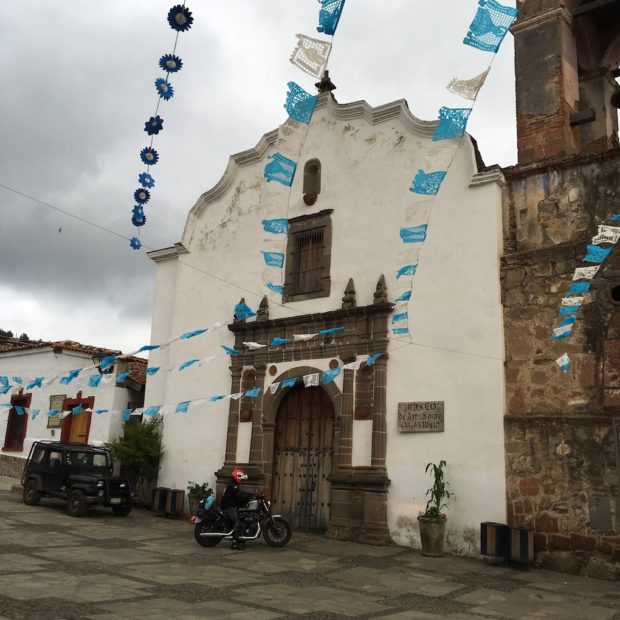
Sitting at home in July of 2015, with no travel plans for that summer, I found myself glued to the internet and in front of my computer. A Democracy Now headline stopped me in my tracks: MASS GRAVES OF IMMIGRANTS FOUND IN TEXAS. As travelers had died over the border in Texas, mortuaries had violated laws in regard to the processing and burial of the bodies. Corpses were not identified or catalogued, they were dumped en masse in plastic bags in shallow graves.
It was not so long ago that my own father made the voyage that thousands of immigrants, particularly refugee children, make every year. I see their northward trek as a natural consequence, a quest for resources and a return to our ancestral lands. Much of the Southwest was originally indigenous, and tribal people travel, always seeking the extended family. Modern borders cannot erase the connection we have had to these lands over millennia. Whether locating my home in what was California Ohlone country, or tracing my ancestors back to Zapotlán, I acknowledge my interconnectedness to an indigenous heritage.
Reading the news about the mass graves in Texas, I was undone. Horrified for the families these unknown sojourners left behind, trying to imagine their longing and grief confounds me. When that northern-bound pioneering brother, father or mother left in search of a new life to never return, what would happen to the void their disappearance creates?
Maybe home is where your dead are buried. Survivors of immigrants who ventured to the U.S.-Mexican border, whether from Guatemala, El Salvador or Sinaloa, will probably always have an attachment to the area where they lost their loved ones. Just as I feel the need to return to my grandmother’s burial place, others may want to continue north as a pilgrimage, as completion of an unfulfilled journey.
That I belong to a country that engages in such barbarous and disrespectful burial practices shocked me. It seemed typical of something that might happen in a war-torn country. I had yet to acknowledge the cultural wars and the normalized hate, which has since emerged in the wake of the 2016 election.
In some odd twist of synchronicity, about a week after reading about the mass graves in Texas, my mother dropped some dramatic news over Sunday Brunch. “Oh, guess who called me yesterday? Your Tía Alma!” Alma is the fourth youngest from my Dad. There had been no communication in twenty years.
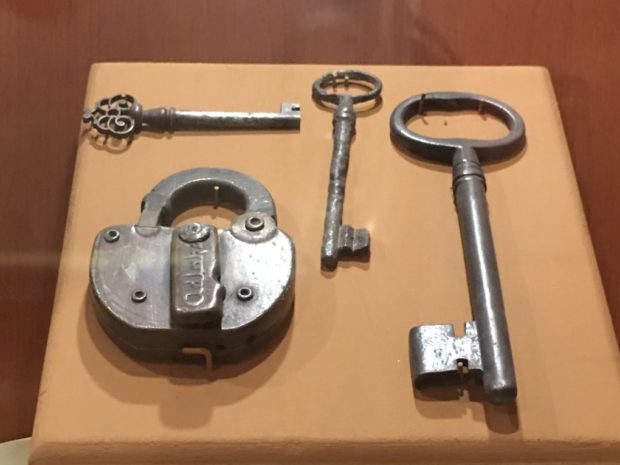
These were cuñadas, sisters-in-law, who shared each other’s homes, who packed picnic baskets full of tacos, with eleven kids between them, for afternoons at Manzanillo and Lake Comanche. Cuñadas who set each other’s hair in rollers, confided secrets over cigarettes and brandy, kept each other afloat when husbands didn’t come home for days on end. Cuñadas who held money in secret jewelry boxes for train tickets and fees for the notary. Cuñadas who scoured the city for the right doctor to treat a child struck with pneumonia. Her call felt momentous, but how would we bridge the chasm that had separated our lives?
I knew I needed to talk to my tías. I wanted my children to witness firsthand, the poverty my parents had experienced, but also to know the warmth and the resilience of the people that helped my father and his siblings. After all, it was Isela’s brothers and sisters who raised the remaining five children when she died at age thirty-four, supposedly of a broken heart.
Forgiveness is a kind of resilience. I thought about Tía Alma reaching out to my mother. She, too, was a widow. Could they have grown more forgiving in their old age? It seemed so. Word got around that my mother and Alma were speaking. One particularly lovely, feisty aunt, Tia Belén, became my biggest email correspondent. I kept writing about how much I missed them, and she insisted I come visit.
Her daughter wrote me: “We’ll be in a house near the coast this summer. Big enough for both our families. Will you come?”
How could I refuse?
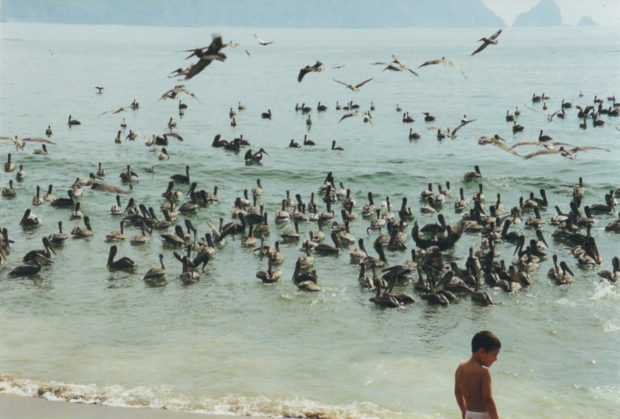
Tía Belén’s greatest gift was calling the extended family to make appointments. She scheduled us for visits with everyone. After awkward, gushing phone calls, I talked to long-lost aunts and uncles. In their voices, I reclaimed parts of my childhood and clues to the man my father sometimes was.
The kids rode horses together, tumbled in the waves together, made up dances in the living room and ran through the plazas with their cousins. They tasted Mexico in fresh-caught huachinango at the beach and real cajeta from Sayula.
At one point at Melaque beach, I savored my Negra Modelo over a perfectly grilled plate of fish and watched as my kids frolicked in and out of the waves. Seaside play was a joy my father had known as a boy, before responsibility kicked in. Though I kept jumping out of my seat, when the waves looked too menacing and the kids braved the waters. My son thrilled with the tumble of the ocean. He must’ve inherited some costeño genes.
I wanted my children to see the actual roads where my father sold bread as a seven-year old peddler. I wanted them to see the landscapes, the mountainous canyons, the old women selling cheap jewelry and the twin volcanoes that dominate the valley of Zapotlán. Maybe they would feel some sense of connection when they heard about migrants, border crossings and mass graves so that they might one day create change in the world.
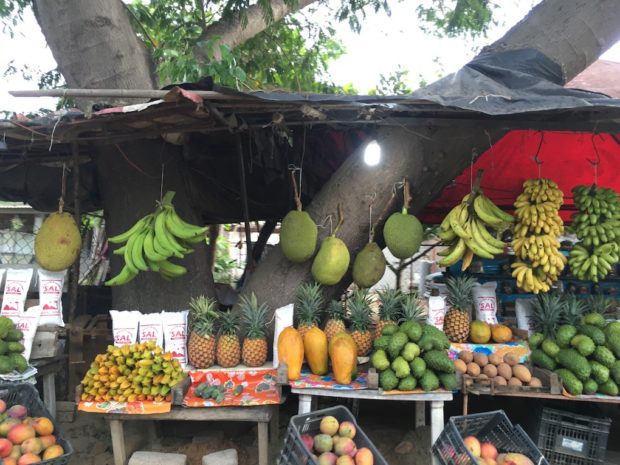
After visiting for two weeks in Guzmán and Colima, the hardest leg of my trip would be visiting Tia Alma, my father’s sister in Guadalajara. I knew she would pose many questions about the last years of my father’s life. They were each other’s favorites. She told me that when he arrived at her house, he’d often holler from the sidewalk, “¿Dónde está la Elizabeth Taylor? Qué salga Elizabeth Taylor!” Alma was blessed with the eyes of a starlet.
The last time I had visited Tía Alma, I also ditched a family reunion in Guadalajara and embarked on a solo trip to Mexico City. To them I was a libertina americana. Only tragedy could befall me.
Standing in Tía Alma’s house after all those years, I defied their expectations.
I was a forty-something married schoolteacher with two kids who could actually speak Spanish, not the bohemian, unrespectable callejera they had imagined. I could barely answer one question about my sisters or my life, before another topic exploded. Giddy with the reunion, we dropped chisme, sibling updates, and dirty jokes. I laughed, cried and jittered with so much excitement that I could hardly eat my pozole.
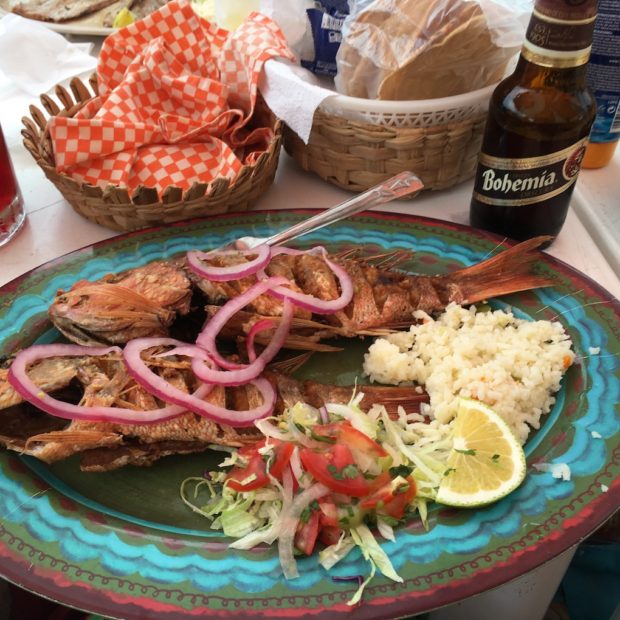
I brought along a restored photo of my grandfather and my Dad and the prayer card from his funeral. The restored photo was taken in 1947 in Oakland, California. My grandfather, Martín, wears a dark brown double-breasted jacket. My father dons a tan jacket with padded shoulders and trousers that hint at a Zoot Suitish swagger. My father is fifteen, sports finger waves in his pomp. His eyes are alight with something like hope.
According to my father, they had sent a copy to Isela in Mexico, who awaited word from him after he left Tuxpan. Tia Alma had never seen these images of her father and my Dad. The picture of them together brought him to life for us. We had questions for each other. My tía needed to ask about how exactly had he died and where was he buried. This is the talk that was needed to crack open the years of silence.
Tía Alma was weepy and grateful that I’d made the visit. Looking into her beautiful face, I realized that of all the culturally conscientious efforts I’ve made in helping my children learn about Mexico, this right here: sharing time, laughter and tears was the real work I’d long needed to do.
Had I not gone back, who would have?
Home may not only be where your dead are buried. Home is also where the living long for your return.
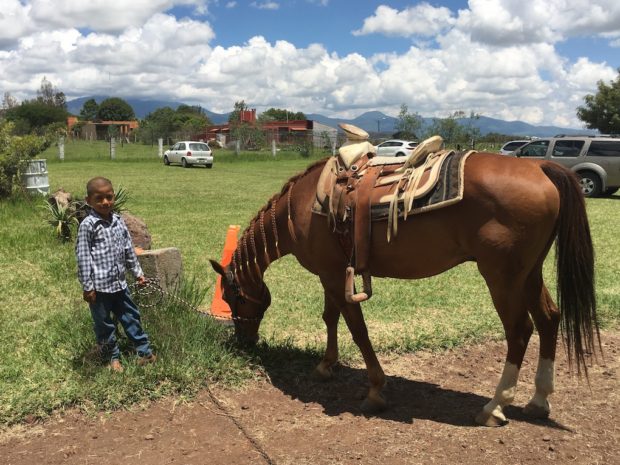






One Response to Between Alma and Belén—On Identity and Journeys Home